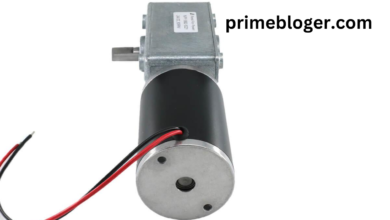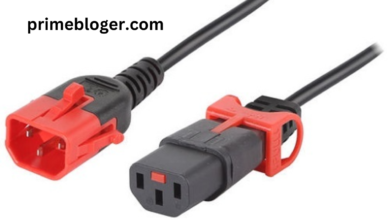Understanding IEM Headphones The Ultimate Guide to In-Ear Monitors

In-Ear Monitors (IEMs) have become an essential audio tool for audiophiles, musicians, and even casual listeners seeking superior sound quality from their portable devices. As the demand for high-quality sound on the go continues to grow, IEM head phones have evolved to offer an immersive listening experience in a compact and portable format. This guide will explore what IEM headphones are, how they work, their benefits, and the key factors to consider when choosing the right pair.
What Are IEM Headphones?
IEM head phones, or In-Ear Monitors, are a specific type of earphones designed to fit snugly in the ear canal. Unlike traditional earbuds that rest on the outer ear, IEMs are inserted directly into the ear canal to provide a more secure and comfortable fit. This design allows for improved noise isolation and better sound quality compared to conventional earbuds.
IEM Headphones are commonly used by musicians and sound engineers to monitor audio during live performances and recording sessions. However, over time, their popularity has extended to audiophiles and casual music listeners due to their excellent sound quality, portability, and ease of use.
How Do IEM Head phones Work?
IEM head phones work by using miniature speakers called drivers, which convert electrical signals into sound. The main difference between IEMs and regular earbuds lies in their design and how the drivers are configured. IEMs typically use multiple drivers that are tuned to different frequency ranges, allowing them to produce a more accurate and detailed sound.
There are various types of drivers used in IEMs, including dynamic drivers, balanced armature drivers, and hybrid drivers. Each type of driver has its own strengths and weaknesses, which contribute to the overall sound signature of the IEMs.
- Dynamic Drivers: These are the most common type of driver found in IEMs. Dynamic drivers use a diaphragm and voice coil to produce sound. They are known for their ability to produce a wide range of frequencies and powerful bass response. However, they may not be as precise in the mid and high frequencies compared to other driver types.
- Balanced Armature Drivers: Balanced armature drivers are smaller and more efficient than dynamic drivers, making them ideal for IEMs that need to be compact and lightweight. These drivers use a tiny armature that is balanced within a magnetic field to produce sound. Balanced armature drivers typically offer more detailed and accurate midrange and high-frequency response, but they may lack the deep bass response of dynamic drivers.
- Hybrid Drivers: Some high-end IEMs use a combination of dynamic and balanced armature drivers in a hybrid configuration. This allows the IEMs to take advantage of the strengths of both driver types, resulting in a more balanced sound profile with rich bass, detailed mids, and clear highs.
Types of IEM Headphones
IEM head phones come in different shapes, sizes, and configurations. Here are the most common types of IEMs:
- Single-Driver IEMs: These IEMs use a single driver to produce the entire frequency range. While they may not offer the same level of detail and separation as multi-driver IEMs, single-driver models can still deliver a satisfying listening experience, especially for casual listeners.
- Multi-Driver IEMs: These IEMs use multiple drivers, with each one dedicated to a specific frequency range (bass, midrange, or treble). Multi-driver IEM Headphones are often preferred by audiophiles due to their superior sound quality, precise frequency response, and ability to handle complex musical passages.
- Custom IEMs: Custom IEMs are made to fit the unique shape of your ears. They are typically molded to your ear canal for a perfect fit, ensuring maximum comfort and superior noise isolation. These IEMs are popular among musicians, sound engineers, and audiophiles who require the highest level of audio fidelity and comfort.
- Universal IEMs: Universal IEMs are pre-made and designed to fit most ear shapes. While they may not offer the same level of customization and comfort as custom IEMs, they are more affordable and still deliver excellent sound quality.
Benefits of IEM Head phones
IEM head phones offer several advantages over traditional headphones and earbuds. Here are some of the key benefits:
1. Superior Sound Quality
IEMs are known for their excellent sound reproduction. The design of IEMs allows for better isolation from ambient noise, resulting in a more focused and detailed listening experience. Whether you’re listening to classical music, rock, electronic, or hip-hop, IEMs can deliver rich, clear, and balanced sound.
2. Noise Isolation
One of the main benefits of IEMs is their ability to block out external noise. The snug fit of IEMs inside the ear canal creates a seal that helps to reduce ambient noise, allowing you to enjoy your music without distractions. This makes IEMs ideal for listening in noisy environments, such as on public transportation or in crowded areas.
3. Portability
IEM Headphones are incredibly compact and lightweight, making them easy to carry around and store. Their small size also makes them ideal for traveling, whether you’re commuting, flying, or hiking. Unlike full-sized headphones, IEMs can easily fit into a pocket or small carrying case.
Previous article; R2B2 Cologne The Future of Fragrance
4. Comfort
IEMs are designed to fit securely in the ear canal, offering a comfortable and snug fit. Most IEMs come with interchangeable ear tips in various sizes and materials, allowing you to find the perfect fit for your ears. This ensures that you can enjoy long listening sessions without discomfort.
5. Discreet Appearance
Because of their small size, IEMs have a discreet appearance compared to over-ear headphones or even some earbuds. If you want to enjoy your music without drawing attention, IEMs are an ideal choice.
Key Factors to Consider When Choosing IEM Headphones
When choosing IEM head phones, it’s important to consider several factors that can impact the overall listening experience. Here are the key factors to keep in mind:
1. Sound Quality
Sound quality is the most important factor when selecting IEMs. Different IEMs have different sound signatures, with some emphasizing bass, mids, or treble frequencies. It’s important to choose IEMs that match your listening preferences. If you enjoy deep bass, look for IEMs with a strong low-end response. If you prefer a more neutral or balanced sound, look for IEMs that provide clear mids and highs.
2. Driver Configuration
As mentioned earlier, IEMs come with different types of drivers, such as dynamic drivers, balanced armature drivers, or hybrid drivers. The driver configuration will significantly impact the sound profile of the IEMs. Single-driver IEMs are generally more affordable but may not offer the same level of detail as multi-driver models. Multi-driver IEMs, on the other hand, provide better sound separation and more accurate frequency response.
3. Fit and Comfort
The fit of your IEMs is crucial for both comfort and sound isolation. IEMs should create a good seal in the ear canal to provide optimal noise isolation and prevent sound leakage. Most IEMs come with a range of ear tips in different sizes and materials (such as foam or silicone), so you can find the best fit for your ears. Custom IEMs offer a personalized fit, but they can be expensive.
4. Noise Isolation and Sound Leakage
Noise isolation is another important consideration when choosing IEM Headphones. IEMs with a good seal in the ear canal will block out external noise, allowing you to focus on your music. Additionally, a proper seal ensures that sound does not leak out, preventing audio from disturbing others around you.
5. Durability
While IEMs are generally more durable than traditional earbuds, their small size can make them more susceptible to damage if not handled properly. Look for IEMs made from high-quality materials such as metal or reinforced plastic. A detachable cable is also a useful feature, as it allows you to replace a damaged cable without having to replace the entire pair of IEMs.
6. Price
IEMs are available at a wide range of price points, from affordable entry-level models to high-end, audiophile-grade options. While more expensive IEMs often offer better sound quality and build, there are also many budget-friendly options that provide excellent value for money. Consider your budget and choose IEMs that offer the best balance of performance and price.
Popular IEM Headphones on the Market
Several IEM brands have gained a reputation for producing high-quality audio equipment. Here are a few popular IEMs that are highly regarded by audiophiles and casual listeners alike:
- Shure SE215: The Shure SE215 is an affordable entry-level IEM with excellent sound quality and durability. It features a single dynamic driver and provides clear and balanced sound with good bass response.
- Westone W40: The Westone W40 is a high-end IEM that uses four balanced armature drivers for exceptional sound detail and separation. It is known for its accurate midrange and clear highs.
- Etymotic ER4 XR: Etymotic’s ER4 XR is a popular choice among audiophiles for its excellent sound isolation and precise frequency response. It uses a single balanced armature driver and delivers a detailed, neutral sound signature.
- Campfire Audio Andromeda: The Campfire Audio Andromeda is a premium IEM that features five balanced armature drivers, offering a rich and detailed sound with excellent soundstage and clarity.
- Sennheiser IE 900: The IE 900 is a high-end IEM that delivers pristine sound with deep bass, clear mids, and extended treble. It features a single dynamic driver and is designed for audiophiles who seek the ultimate in sound quality.
Conclusion
IEM headphones offer a unique and portable audio experience that is ideal for audiophiles, musicians, and casual listeners. With their compact design, superior sound quality, and noise isolation, IEMs are perfect for listening to music on the go. When choosing IEMs, it’s important to consider factors such as sound quality, driver configuration, fit, and comfort. By understanding the key features and benefits of IEMs, you can select the right pair that suits your listening needs and preferences.
Whether you’re a music enthusiast looking for an immersive listening experience or a professional musician in need of high-quality audio for live performances, IEM head phones provide the versatility, comfort, and performance you need.





